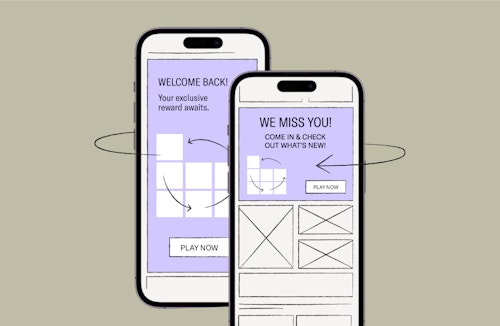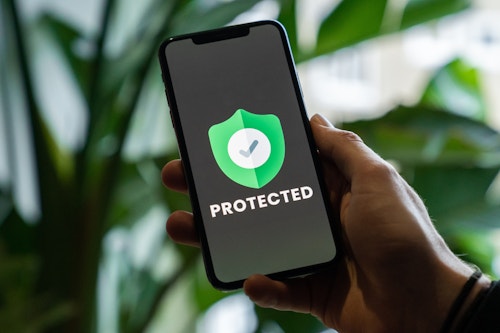How retargeting helps you prevent the worst type of user churn
September 19, 2023

The battle to keep mobile audiences in-app and engaged is constant, and churn (the percentage of users who stop using an app) is the biggest enemy. Globally, 74% of app users churn the day after an app install, with only 6% remaining active 30 days after the install.
This drop in retention can significantly affect revenue numbers, particularly for companies whose monetization strategy relies on in-app purchases (which account for 48.2% of today’s mobile app earnings).
Investing in user acquisition campaigns that result in high churn rates is not good for business – as a marketer, what can you do to decrease the chances of this happening?
When and why users go missing
Acquiring new and more users is essential for growing your app - but getting installs is only the beginning of a path towards holding their attention and turning them into profitable customers.
Churn often happens in the early stages of the user’s app journey, meaning you should think about tackling this issue early, and long before launching your mobile ad campaigns. Apps typically show high retention rates on day 1 of install, but from day 2 they can experience a considerable drop in retention. Adjust data reveals that the average app churn rate 7 days after an install is 87%, and as referenced above, the average app churn rate for 30 days after the install is 94%.
For most apps, churn is a behavioral phenomenon that cannot be 100% avoided. Even if you optimize your app’s user experience and onboarding process, there’s no guarantee people will stick around. Thousands of apps hit Apple’s App store and Google’s Play Store every day, so competition for consumers is fierce. By using in-app retargeting, however, you can help reduce churn rates.
« Retargeted users have a 152% higher engagement rate 30 days after install compared to those who were not part of any retargeting campaigns »
Combating the worst type of churn
The worst type of user churn occurs when a new user drops off before completing the first intended in-app action, such as completing a first tutorial, filling in a profile or in some cases, a first purchase. This indicates a significant loss – no results from user acquisition investments, no conversions, no return on investment (ROI).
Why do we call this the worst type of churn? Well, the faster churn happens, the less the user has interacted with the app (and the harder it is to win them back). Newly acquired users, whether from organic or paid campaigns, are high-intent and quality users. If these users drop off without completing a first in-app action, that’s a missed opportunity to secure potentially valuable and loyal customers. Retargeting these users directly after the install will give you a much better chance of driving them down your sales funnel.
According to one study, retargeted users have an overall 152% higher engagement rate in the 30 days after the install compared to those who were not part of any retargeting campaigns. Looking specifically at day 1 of install, the engagement rate for retargeted users is even higher – 200%.
How retargeting helps overcome user churn
One of the best ways to lower churn, increase retention and drive conversions is to engage users from the very start of their app journey – before they uninstall or become inactive. The most successful marketers turn to in-app retargeting to do this as it helps attract daily active users and keep them returning to the app and interacting with its content.
Take gaming apps as an example - you can use retargeting ads to prompt gamers to immediately return to the app by introducing new levels, highlighting new features or offering perks and incentives that allow them to progress further in the game. For gamers who have installed an app but have not used it, you can show specific creatives to incentivize them to open the app, such as offering a daily login bonus or the chance to play with an exclusive character. In episode 28 of the Apptivate podcast, Nadav Shalit, Head of Gaming at Snap Inc. (and Retargeting Lead at Playtika at the time of recording), discussed why engaging with audiences from the moment they open the app is essential for generating future in-app revenue:
“We communicate with users several days after the install. For certain activities, we may show an ad the day after the install saying ‘hey did you check out this feature?’ This builds up the connection from day 1.”
If you’re a food delivery app you can retarget newly installed users right away with ads before meal times. Combine that with a sense of urgency, such as offering a discount if they order before a certain time, and you’ll find that users are more likely to take that first in-app action. E-commerce apps can also use time-limited deals, like discount codes for certain products, to encourage new users to make a first purchase.
Tips for preparing your in-app retargeting strategy
Retention is also a long game that requires a keen eye for forward planning and data analysis. Work on identifying and pinpointing the causes of high churn rates and addressing them by implementing a well-thought-out in-app retargeting strategy.
Here are some of the first things to keep in mind when addressing user churn and building a retargeting strategy:
- Look out for drop-off points during and after the onboarding process to identify bottlenecks in the app journey. These moments signal key areas for improvements within the app and present opportunities to engage with users at the right time.
- Continuously monitor retention and cohort reports and in-app event data for clues on how to further optimize paid campaigns and fine-tune audience segmentation.
- Focus on day 1, day 3, and day 7 retention when planning retargeting campaigns. Don’t wait until day 30 to reach your users.
- Track competitor campaigns and performance for areas such as engagement, revenue, retention, paid and organic downloads and demographics. Similar apps may have similar users with similar behaviors – this lets you spot patterns to optimize your retargeting strategies.
- Proactively collect user feedback throughout their journey by using in-app surveys and polls. Users will be able to give specific insights into how they perceive and use your app.
Get the latest app marketing insights
Join our newsletter





